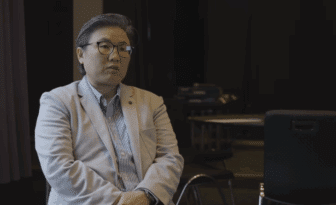DIALOGUE SNAPSHOT REPORT
December 2021
Online
Dialogue Summary
Over the past decade, higher education authorities and institutions have engaged in a process of rapid internationalization. The number of students studying internationally topped more than 5.6 million in 2020. Internationalization, usually defined as the increase in students and scholars seeking opportunities abroad, actually encompasses more: It includes critical issues such as student and scholar mobility, creating new cultural awareness and curriculum opportunities at home institutions, as well as virtual exchanges and collaboration.
The United States and European countries continue to be global leaders in the internationalization of higher education. However, in recent years other nations have begun investing in internationalizing their institutions. Although in some cases this has created international competition, it has also led to more opportunities for students and scholars, and significant improvement in the rankings and stature of regional institutions. The COVID-19 pandemic created significant disruption to internationalization trends. But now, the abatement of the COVID-19 pandemic provides an opportunity for governments, institutions, scholars, and individuals to re-evaluate those trends and to globalize practices further. What will internationalization look like in the coming years? How have recent events changed trends? How can internationalization become more global?
To assess these questions and the new trends in global higher education internationalization, the Hollings Center conducted a virtual dialogue program from November–December 2021. Participants from the United States, Europe, the Middle East, and South Asia attended sessions that focused on the impact of COVID-19 on internationalization, the concept of internationalization “at home,” and how to amplify the impact of higher education internationalization globally.
Higher Education Internationalization Conclusions
The COVID-19 pandemic created a major disruption to internationalization efforts, as it cut off student and scholar mobility. However, the pandemic created a unique opportunity to conceptualize higher education internationalization outside of traditional perceptions. Online options, re-connection to locally based international communities, and regionally based partnerships are now available options.
Many of the challenges facing the movement to internationalize higher education preceded the pandemic. Institutional and national elitism, lack of mutuality in exchanges, and misperceptions about the cost and value of internationalization were not caused by the pandemic, but have been amplified by it.
Participants called for a greater amount of intentionality in design and availability of resources to improve higher education internationalization. The many lessons learned from the emergency period of the pandemic can be used for a better future experience.
Participants proposed several suggestions to improve internationalization of higher education in the post-pandemic era, including:
Promoting hybrid, flexible options for exchanges and courses;
Creating linkages between Global South institutions to build regionally based international exchanges and course collaborations;
Improving global awareness and internationalization within local communities using resources and communities close to home;
Re-establishing local community ties so that the benefits of internationalization can have an impact on service to the community—a key mission for most institutions.



